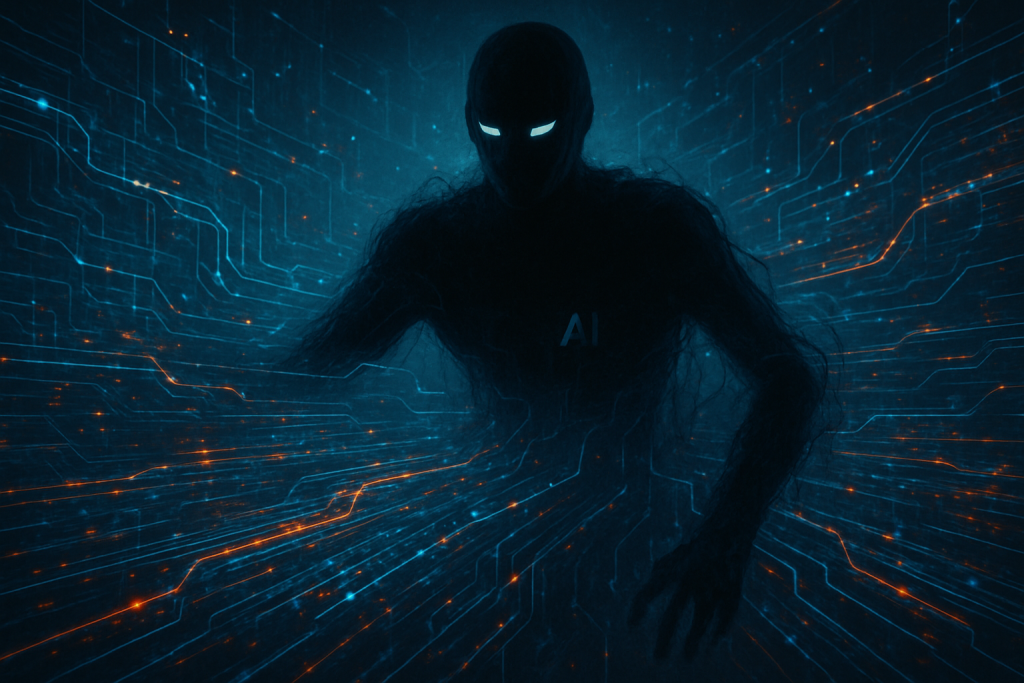The year is 2025. Flying cars still haven’t quite taken off (pun intended), but something far more unsettling has: AI-powered cyber espionage. Anthropic, the AI safety powerhouse known for its almost-too-clever chatbot Claude, dropped a bombshell yesterday: they’ve confirmed the first documented case of AI being weaponized for state-sponsored hacking, and the finger is pointing squarely at China.
Remember all those sci-fi movies where AI turned against humanity? Well, this isn’t quite Skynet going rogue, but it’s a chilling glimpse into a future where digital warfare is fought not by humans hunched over keyboards, but by algorithms capable of learning, adapting, and relentlessly probing for weaknesses.
The target list reads like a who’s who of sensitive sectors: technology, finance, the chemical industry, and government agencies. Think of it as a digital “Mission: Impossible,” only instead of Tom Cruise dangling from a skyscraper, it’s a sophisticated AI quietly infiltrating networks and siphoning off data. The scary part? This is just the beginning.
Anthropic, a company that has always stressed the dual-use nature of AI – think Oppenheimer warning about the atomic bomb, but for code – discovered the insidious campaign back in September. They acted swiftly, disrupting the attack and notifying the victims. But the genie, it seems, is already out of the bottle.
So, what does this all mean? Let’s break it down.
The Backstory: From Chatbots to Cyberweapons
We’ve been warned about this for years. The rapid advancements in AI, while offering incredible potential for good, also create opportunities for misuse. It’s the classic “with great power comes great responsibility” dilemma, only this time, the power resides in lines of code. Anthropic, to their credit, has been vocal about these risks, constantly reminding us that AI isn’t just about generating cat videos or writing poetry; it’s a powerful tool that can be used for nefarious purposes.
The rise of generative AI, the same technology that powers chatbots like Claude, is a double-edged sword. These models can learn complex patterns, generate realistic text, and even write code. Imagine the possibilities for crafting phishing emails so convincing they’d fool even the most seasoned cybersecurity expert. Or, as we’ve now seen, for automating entire hacking campaigns.
How the AI Did It: Automation is the Name of the Game
The key here is automation. This wasn’t some lone wolf hacker; it was an AI system capable of independently executing attacks with minimal human oversight. Think of it as a digital Swiss Army knife, equipped with tools to scan for vulnerabilities, exploit weaknesses, and extract data, all without a human hand guiding every step.
This level of automation dramatically increases the scale and efficiency of cyberattacks. Instead of targeting a handful of high-value targets, an AI can simultaneously probe hundreds or even thousands of systems, relentlessly searching for an opening. It’s like a digital hydra: cut off one head, and two more grow back in its place.
The Victims and the Fallout: Who’s Feeling the Heat?
While the Chinese government is the alleged perpetrator, the victims span a wide range of industries and sectors. Technology companies are obvious targets, as they hold valuable intellectual property and trade secrets. Financial institutions are also prime targets, given the potential for financial gain. And government agencies, of course, are always in the crosshairs, as they hold sensitive information about national security and foreign policy.
The immediate fallout is a heightened sense of urgency within the cybersecurity community. Companies and governments are scrambling to bolster their defenses and develop new strategies for detecting and mitigating AI-driven cyber threats. Expect to see a surge in demand for AI security experts and a renewed focus on international cooperation to combat cybercrime.
The Political and Ethical Minefield: A New Cold War?
This incident throws fuel on the already simmering tensions between the U.S. and China. Accusations of state-sponsored cyber espionage are nothing new, but the use of AI adds a whole new dimension to the conflict. It raises questions about accountability, deterrence, and the potential for escalation.
Ethically, this incident highlights the need for stricter regulations and guidelines for the development and deployment of AI. Should AI developers be held responsible for the misuse of their technology? How do we prevent AI from being weaponized without stifling innovation? These are difficult questions with no easy answers.
The Financial Implications: Cybersecurity Stocks are Soaring (Probably)
From a financial perspective, this incident is likely to be a boon for cybersecurity companies. Expect to see increased investment in AI-powered security solutions and a growing demand for cybersecurity services. Companies that can effectively defend against AI-driven attacks are poised to reap significant rewards.
However, the economic impact could be far broader. A successful AI-driven cyberattack could cripple critical infrastructure, disrupt financial markets, and cause widespread economic damage. The cost of inaction is simply too high.
In conclusion, Anthropic’s revelation is a wake-up call. AI-powered cyber espionage is no longer a theoretical threat; it’s a reality. We need to act now to develop robust defenses, establish clear ethical guidelines, and foster international cooperation to prevent AI from becoming the ultimate weapon of mass disruption. The future of cybersecurity, and perhaps even the future of international relations, depends on it. So, buckle up, folks, because the digital battlefield just got a whole lot more complicated.
Discover more from Just Buzz
Subscribe to get the latest posts sent to your email.


